Growing for Market in partnership with Johnny's Selected Seeds has created a library of expert information about growing and selling vegetables and flowers. Links in the article will take you to johnnyseeds.com.
Subscribe to Growing for Market for more great ideas about growing and marketing!
For more topics in the series, click on Market Farming Basics in the left column.

AgSquared and Moveable caterpillar tunnels
Free trial of crop planning software
AgSquared is a new, web-based software program designed specifically for small farmers. It offers a suite of tools that will help you make your crop plans and follow through on them throughout the season.
The primary benefit of the program is that it allows you to make comprehensive crop plans for each variety you will be growing this season. You can schedule seeding and transplanting dates, assign the crop to a specific field or bed, plan for management tasks such as pruning and spraying, and project harvest dates (done automatically when you enter days to maturity for the variety). As you enter details for each crop, the program collects the data and creates a calendar of tasks and events. You can consult the calendar weekly, monthly, or seasonally to keep a clear idea of the work that needs to be done. In addition, you can amend your plans as needed and keep track of actual harvest dates. The information you record this season will help you make better plans next season.
Many people at Johnny’s have tested the program over the past several months. We think the existing crop-planning features will be helpful for many of our customers, and we believe that as the software continues to develop, it will provide a valuable tool for overall farm management. Additional features planned for the next year include inventory tracking, staff management, and cost accounting, which will be available for an additional fee.
We encourage you to sign up for the free trial, explore the program’s features, and let AgSquared know what additional features would make it even more helpful. When you’re ready to give AgSquared a test drive, we recommend that you start with the video demo. http://www.agsquared.com/en/product/demo.
Have your seed list and planting dates at hand to begin your data entry. If you don’t have good records of your own to consult, Johnny’s has several calculators, including a seed-starting calculator and a target harvest date calculator, to help you determine planting dates. Johnny’s catalog also provides spacing recommendations and average days to maturity for our varieties.
By using Johnny’s resources and the free AgSquared trial, you can be on your way to creating crop plans that will help you manage your workload and improve your bottom line this season.
Moveable caterpillar tunnels
High tunnels are without a doubt one of the most beneficial capital improvements a vegetable farmer can make. But a commercial-grade high tunnel is expensive. You may be able to get grant from USDA’s Natural Resources Conservation Service to pay much of the cost of a high tunnel, and if you’re interested in pursuing that option, you can read more about the program below.
But there are other ways to get many of the benefits of a high tunnel without building a commercial structure. A recent innovation is the moveable caterpillar tunnel, an inexpensive, temporary structure you can build yourself. Johnny’s has developed a pipe bender that will create the correct shape hoops from locally available pipe. We have also produced a comprehensive manual about how to build a moveable tunnel, available free for you to download. Most of the materials you need can be purchased from local home improvement stores, and Johnny’s can supply specialty parts including connectors, pipe track wheels, and greenhouse poly.
A moveable tunnel can be built on a track long enough to accommodate two, three, or even more positions. It gives you tremendous flexibility in scheduling crops that require a protected environment. You can start cool-weather crops extra early in the tunnel. When the weather moderates enough for them to grow outside, you can move the tunnel to the next position and plant warm-weather crops that will get a head start in the warmth of the tunnel. When summer arrives, you can move the tunnel again and cover it with shade cloth to extend the season for lettuce and other vegetables that don’t like the heat. In fall, as the weather cools, you can move the tunnel back over heat-loving crops to get a few more weeks of production from them. Meanwhile, you can plant fall crops outside and when cold weather threatens, move the tunnel over them to keep them going into winter.
If one moveable tunnel can extend the season for so many crops, consider what you can accomplish with several moveable tunnels. In his book, Winter Harvest Handbook, Eliot Coleman describes his complicated crop rotations using multiple moveable tunnels.
Moveable caterpillar tunnels can be an important component of a season extension program that includes greenhouses, stationary high tunnels, low tunnels and row cover. Here are some additional resources to help you extend your season:
Managing Quick Hoops http://www.johnnyseeds.com/t-ManageQuickHoops.aspx
Quick Hoops Low Tunnel Bender Manual http://www.johnnyseeds.com/Assets/Information/9377_9520_Quick_Hoops_Bender_Manual.pdf
Quick Hoops High Tunnel Bender Manual http://www.johnnyseeds.com/Assets/Information/HighTunnelBendermanual.pdf
All about protected cropping <http://www.johnnyseeds.com/t-catalog_extras_tools.aspx>
Growing flowers in the hoophouse <http://www.johnnyseeds.com/t-catalog_extras_flowers.aspx#hoophouse>
Hoophouse strawberries http://www.johnnyseeds.com/t-catalog_extras_fruits.aspx#hoop
NRCS high tunnel program
The Natural Resources Conservation Service has extended its Seasonal High Tunnel Initiative to all 50 states this year. In the first two years of the program, the agency funded 4,430 high tunnels nationwide. It will pay 50-90% of the cost of installing a high tunnel up to 2,178 square feet. Producers can choose to build larger tunnels, but will have to cover the extra cost themselves. The tunnels cannot have any electrical, heating, or mechanical ventilation systems.
NRCS uses rating periods, in which all applications received by the deadline are rated and funded immediately if they meet a standard. Deadlines for 2012 are Feb. 3, March 30, and June 1. For more information, visit the Seasonal High Tunnel Initiative website: http://www.nrcs.usda.gov/wps/portal/nrcs/detailfull/national/programs/?&cid=stelprdb1046250. To apply, visit your local USDA Service Center.
Visit Johnny's Selected Seeds for more free information about growing produce, herbs, cover crops and flowers.
Subscribe to Growing for Market for the latest news and ideas.
Reprinted from JSS Advantage — February 2012

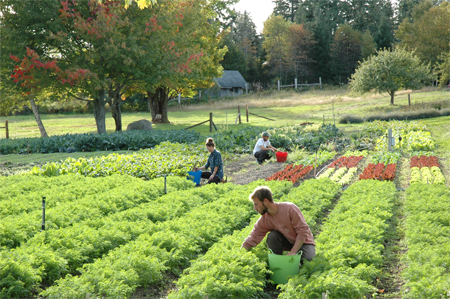 When you're new to farming, everything is so interesting and exciting that you may assume you'll remember every detail of what you are growing, where and when you planted it, and how well it performed. Veteran growers, however, know that the details start to fade quickly over the course of a busy season. That's why the most experienced and successful farmers keep careful records.
When you're new to farming, everything is so interesting and exciting that you may assume you'll remember every detail of what you are growing, where and when you planted it, and how well it performed. Veteran growers, however, know that the details start to fade quickly over the course of a busy season. That's why the most experienced and successful farmers keep careful records.
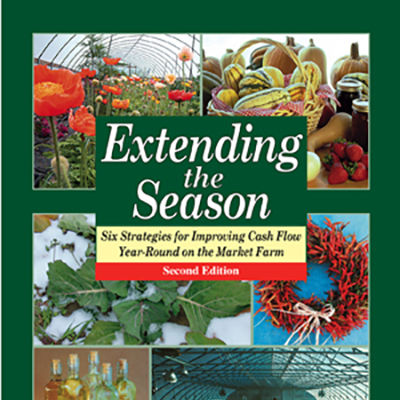
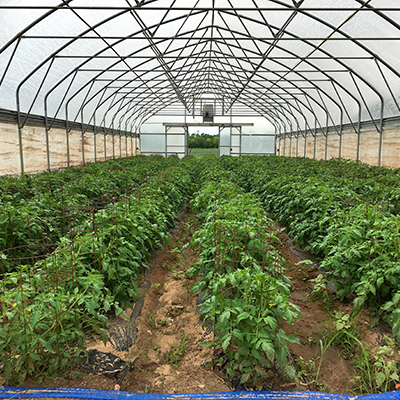
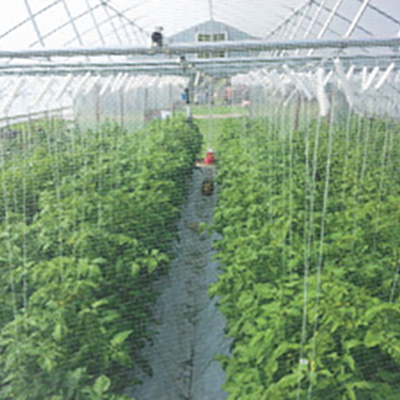
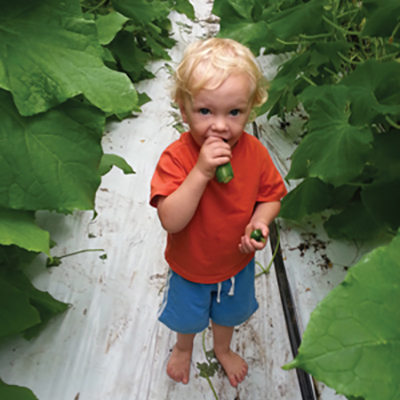

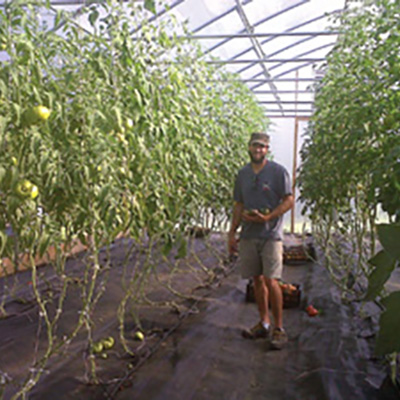
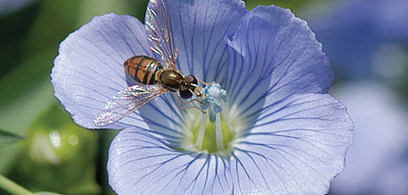 Insect pollination is essential to many vegetable and fruit crops, including tomatoes, squash, pumpkins, watermelons, blueberries, blackberries, apples, almonds, and many others. In the case of watermelons, there will be no fruit without pollination. Some vegetables don't require pollination to set fruit, but pollination by bees will result in larger and more abundant fruits. Nearly 75% of the flowering plants on Earth rely on pollinators to set seed or fruit, as well as one-third of our food crops, and most pollination is performed by honey bees, native bees, and other insects.
Insect pollination is essential to many vegetable and fruit crops, including tomatoes, squash, pumpkins, watermelons, blueberries, blackberries, apples, almonds, and many others. In the case of watermelons, there will be no fruit without pollination. Some vegetables don't require pollination to set fruit, but pollination by bees will result in larger and more abundant fruits. Nearly 75% of the flowering plants on Earth rely on pollinators to set seed or fruit, as well as one-third of our food crops, and most pollination is performed by honey bees, native bees, and other insects.